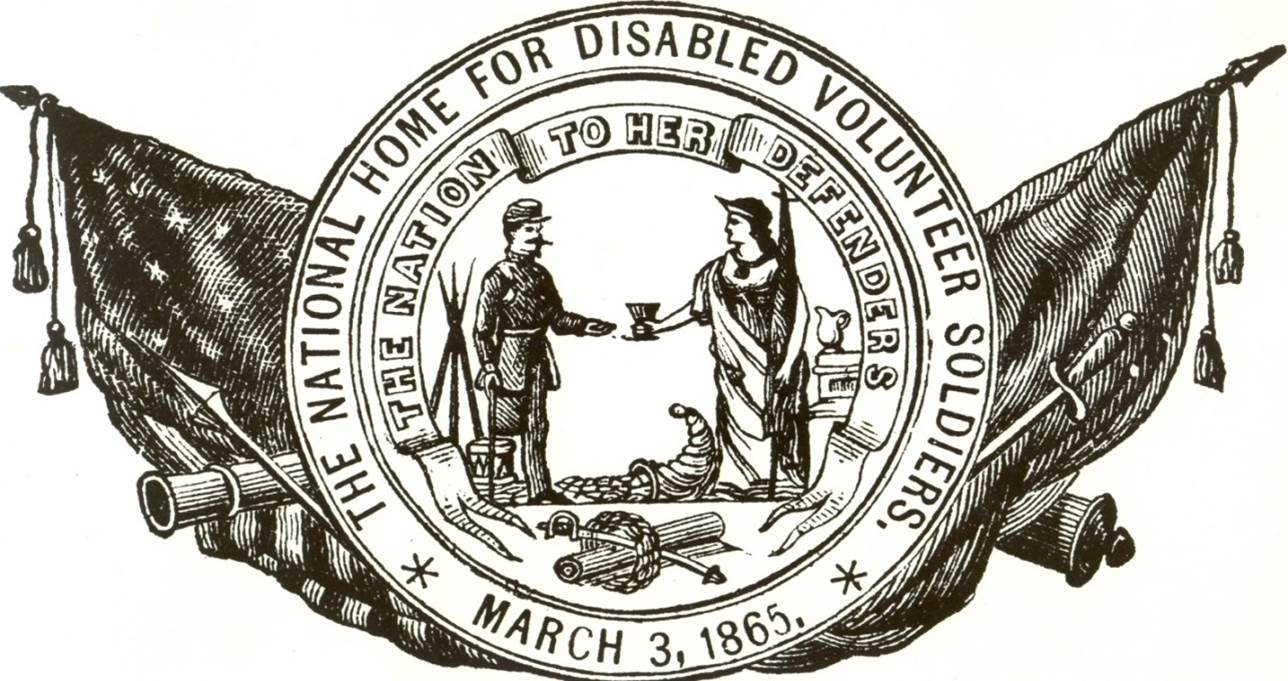On March 3, 1865, the day before his second inauguration and six weeks before his assassination, President Abraham Lincoln signed a law to establish a national military and naval asylum for sick and injured Union Veterans who had served in the Civil War. The National Home for Disabled Volunteer Soldiers established by this legislation, later known as VA homes, then domiciliary, was the first major federal program to provide hospitals, medical and rehabilitative services exclusively to America’s Veterans. New national homes that opened after passage of legislation included:
- The Eastern Branch, Togus, Maine, Nov. 1, 1866
- The Central Branch, Dayton, Ohio. March 26, 1867
- The Northwestern Branch, Milwaukee, Wisconsin, May 15, 1867
- The Southern Branch, Hampton Virginia, December 14, 1870
- The Western Branch, Leavenworth, Kansas, September 1, 1885
- The Pacific Branch, Santa Monica, California, January 1, 1888
- The Marion Branch, Marion, Indiana, July 23, 1888
- The Danville Branch, Danville, Illinois, October 3, 1898
- The Mountain Branch, Johnson City, Tennessee, May 29, 1903
- The Battle Mountain Sanitarium, Hot Springs, South Dakota, May 29, 1907
- The Bath Branch, Bath, New York, December 25, 1928
In 1930, Congress authorized new national homes that were not part of the existing system and were constructed and opened under the newly-formed Veterans Administration as Domiciliary Care Programs.
- The Bay Pines Branch, Saint Petersburg, Florida, March 20, 1931
- The Roseburg Branch, Roseburg, Oregon, May 8, 1933
- The Biloxi Branch, Biloxi, Mississippi, August 11, 1933
The domiciliary has a long history of growing, adapting and changing to meet the challenges of America’s newest generation of Veterans. Even its name has changed to accommodate trends and expectations of a particular era. However, its mission has stayed essentially the same as its founding managers envisioned it: to provide compassionate residential and restorative care for “those who have born the battle”.
Today, Domiciliary Care Programs provide short-term residential treatment and rehabilitation to Veterans with mental health and substance use disorders, co-occurring medical conditions and psychosocial needs including homelessness and unemployment. The programs provide Veterans access to medical, mental health, and substance use disorder treatment in addition to homeless services, psychosocial, vocational rehabilitation and employment training programs.
The domiciliary was built on the wisdom of its founders and is a critical entity in the care of our nation’s Veterans today. In fiscal year 2014, VA operated 8252 domiciliary beds at 106 medical centers locations with over 37,500 admissions to the program.
Topics in this story
More Stories
Study underscores important role COVID vaccination can have in protecting Veterans from infection and reducing long-term health consequences
Columbia VA’s robotic surgery teams completed their 800th robotic surgery and are on schedule to hit 1,000 by the end of the year.
In a decentralized clinical trial, Veterans can participate from their own homes or local VA instead of having to travel to a research site.







